#Ford Fiesta RS Concept
Text
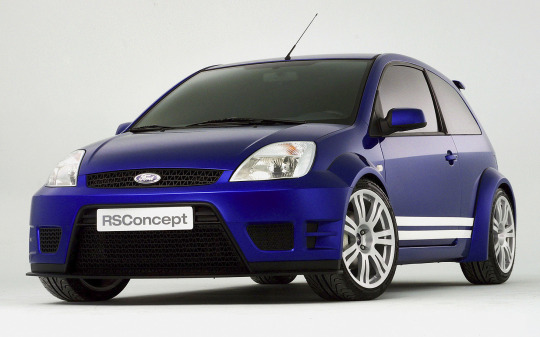

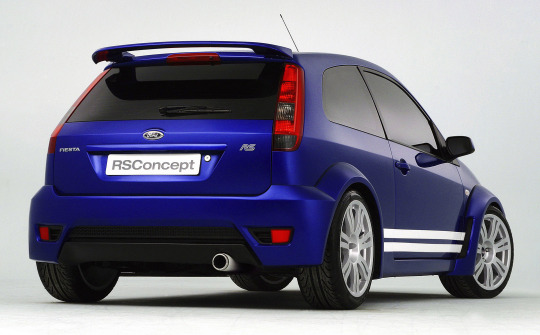
Ford Fiesta RS Concept, 2004. A prototype for a sporty version of the 5th generation Fiesta. When the high performance version was introduced it was more mundane than the concept and was called the Fiesta ST
#Ford#Ford Fiesta RS#Ford Fiesta RS Concept#2004#prototype#concept#design study#pocket rocket#hit hatch#5th generation
151 notes
·
View notes
Text
Turbofan Wheels are Rad and Need to Come Back, and Here’s Why
For any given era and social niche, there are certain markers, certain cultural icons, that serve as symbolic bywords for that era and culture. Clothing can easily become such a reference: bell-bottoms, backward clothes, flannel, JNCOs, skinny jeans—each has had its heyday. So, too, with cars, some icons standing in as rolling representations of their eras—Wolf of Wall Street, anyone? But what about what the cars roll on? Do the shoes make the car, too? In the case of “turbofan” wheels, at least, the answer is yes.
What Is a Turbofan?
Originating from the time when racing’s top levels were just beginning to figure out the “how” of creating downforce and minimizing aerodynamic lift in the 1970s, turbofan wheels were another step in that direction. Perhaps capturing that nascent but incomplete understanding is the name itself, derived from the structure of jet engines.
Typically, an early racing turbofan wheel was little more than a flat, round plate backed with vanes, bolted to the outside of the car’s wheel. The idea was that the flat outer surface produced less aerodynamic drag, while the vanes inside the wheel would still distribute ample cooling air over the brakes. There’s also some evidence that early turbofan pioneers were looking to improve underbody aero, too, though whether they hoped to use the wheel covers as dams to help air flow under the car, or sucker fans to extract air out from under the car, is unclear. It was all a dark art back then, anyway.
Today, turbofan wheels take many forms; some are integral designs with the function of the bolt-on turbofan forged right into the aluminum, others are still bolt-on, and still others use an integral design and the look of turbofans, but lack the internal structure to function as true turbofans—in fact, the latter category is by far the most common.
Turbofans on Production Cars
While turbofan wheels were made famous by legendary race cars of the late 1970s and early 1980s, there have been production cars built with turbofan-style wheels, including the Pontiac Turbo Trans Am, the fourth-generation Chevy Corvette, and the E34-series BMW M5, among others.
Of course, like any cultural phenomenon that grabs the attention and imagination of a large percentage of the populace, turbofan wheels have been taken too far at times, too. My 1994 Ford F-250’s OEM kick-on plastic wheel covers, for example, had a turbofan-style design, making them perhaps the only parts on the truck that were even aware of the concept of aerodynamics. They don’t look cool, either.
Turbofans on Modern Cars
The science of wheel aerodynamics has come a long way in the past 30 years. Most new cars in some way manipulate the air that flows over and through the wheels, whether it’s to make the vehicle more aerodynamically efficient for better gas mileage in standard passenger cars, hybrids, and EVs, or to improve downforce or brake cooling for performance cars. Most often, the over-wheel airflow is handled by a concert of vents and flaps in the front bumper cover, front fender, and the rear bumper/fender/diffuser complex, with the wheel-face design itself playing a smaller role.
While modern production cars don’t often lean on the turbofan aesthetic, it lives on in the aftermarket, and in enthusiast communities shaped by the motorsports history and iconic looks of the cars that wore them originally. Ken Block’s Gymkhana 6 car, for example, a 2015 Ford Fiesta ST rallycross car, wore turbofans on the front wheels—but not on the back. Block’s Ford Escort RS Cosworth, aka “Cossie V2,” also wears turbofan wheels, alternately pictured with a matching set of four classic turbofans, or with a set of black classic turbofans up front, and a set of white fan-style five-spokes on the rear axle.
Porsche’s own re-born 935 (many regard the original as the originator of the turbofan wheel) sports a full set of classic-style turbofan wheels.
Regardless of their dubious efficacy, or the aerodynamic advances made in the decades since their arrival, turbofan wheels remain a touchstone of automotive style, and markers of an era when pushing the limits of what was possible meant exploring the unknown and even the unlikely in search of speed and victory—and, let’s be real, they just look cool as hell.
Turbofan Wheel Quick Facts
Born of 1970s and 1980s race cars
Intended to aid aerodynamics as well as manage brake temperatures
Made in many different styles
Still popular with enthusiasts
Available in the aftermarket
Iconic emblem of an era to a certain populace of automotive and racing enthusiasts
The post Turbofan Wheels are Rad and Need to Come Back, and Here’s Why appeared first on Automobile Magazine.
Turbofan Wheels are Rad and Need to Come Back, and Here’s Why published first on https://kwsseuren.tumblr.com/
0 notes
Text
Turbofan Wheels: The History and Appeal of These Awesome Rims
For any given era and social niche, there are certain markers, certain cultural icons, that serve as symbolic bywords for that era and culture. Clothing can easily become such a reference: bell-bottoms, backward clothes, flannel, JNCOs, skinny jeans—each has had its heyday. So, too, with cars, some icons standing in as rolling representations of their eras—Wolf of Wall Street, anyone? But what about what the cars roll on? Do the shoes make the car, too? In the case of “turbofan” wheels, at least, the answer is yes.
What Is a Turbofan?
Originating from the time when racing’s top levels were just beginning to figure out the “how” of creating downforce and minimizing aerodynamic lift in the 1970s, turbofan wheels were another step in that direction. Perhaps capturing that nascent but incomplete understanding is the name itself, derived from the structure of jet engines.
Typically, an early racing turbofan wheel was little more than a flat, round plate backed with vanes, bolted to the outside of the car’s wheel. The idea was that the flat outer surface produced less aerodynamic drag, while the vanes inside the wheel would still distribute ample cooling air over the brakes. There’s also some evidence that early turbofan pioneers were looking to improve underbody aero, too, though whether they hoped to use the wheel covers as dams to help air flow under the car, or sucker fans to extract air out from under the car, is unclear. It was all a dark art back then, anyway.
Today, turbofan wheels take many forms; some are integral designs with the function of the bolt-on turbofan forged right into the aluminum, others are still bolt-on, and still others use an integral design and the look of turbofans, but lack the internal structure to function as true turbofans—in fact, the latter category is by far the most common.
Turbofans on Production Cars
While turbofan wheels were made famous by legendary race cars of the late 1970s and early 1980s, there have been production cars built with turbofan-style wheels, including the Pontiac Turbo Trans Am, the fourth-generation Chevy Corvette, and the E34-series BMW M5, among others.
Of course, like any cultural phenomenon that grabs the attention and imagination of a large percentage of the populace, turbofan wheels have been taken too far at times, too. My 1994 Ford F-250’s OEM kick-on plastic wheel covers, for example, had a turbofan-style design, making them perhaps the only parts on the truck that were even aware of the concept of aerodynamics. They don’t look cool, either.
Turbofans on Modern Cars
The science of wheel aerodynamics has come a long way in the past 30 years. Most new cars in some way manipulate the air that flows over and through the wheels, whether it’s to make the vehicle more aerodynamically efficient for better gas mileage in standard passenger cars, hybrids, and EVs, or to improve downforce or brake cooling for performance cars. Most often, the over-wheel airflow is handled by a concert of vents and flaps in the front bumper cover, front fender, and the rear bumper/fender/diffuser complex, with the wheel-face design itself playing a smaller role.
While modern production cars don’t often lean on the turbofan aesthetic, it lives on in the aftermarket, and in enthusiast communities shaped by the motorsports history and iconic looks of the cars that wore them originally. Ken Block’s Gymkhana 6 car, for example, a 2015 Ford Fiesta ST rallycross car, wore turbofans on the front wheels—but not on the back. Block’s Ford Escort RS Cosworth, aka “Cossie V2,” also wears turbofan wheels, alternately pictured with a matching set of four classic turbofans, or with a set of black classic turbofans up front, and a set of white fan-style five-spokes on the rear axle.
Porsche’s own re-born 935 (many regard the original as the originator of the turbofan wheel) sports a full set of classic-style turbofan wheels.
Regardless of their dubious efficacy, or the aerodynamic advances made in the decades since their arrival, turbofan wheels remain a touchstone of automotive style, and markers of an era when pushing the limits of what was possible meant exploring the unknown and even the unlikely in search of speed and victory—and, let’s be real, they just look cool as hell.
Turbofan Wheel Quick Facts
Born of 1970s and 1980s race cars
Intended to aid aerodynamics as well as manage brake temperatures
Made in many different styles
Still popular with enthusiasts
Available in the aftermarket
Iconic emblem of an era to a certain populace of automotive and racing enthusiasts
The post Turbofan Wheels: The History and Appeal of These Awesome Rims appeared first on MotorTrend.
via RSSMix.com Mix ID 8134279 https://ift.tt/2Ps3lrM
0 notes
Text
Turbofan Wheels: The History and Appeal of These Awesome Rims
For any given era and social niche, there are certain markers, certain cultural icons, that serve as symbolic bywords for that era and culture. Clothing can easily become such a reference: bell-bottoms, backward clothes, flannel, JNCOs, skinny jeans—each has had its heyday. So, too, with cars, some icons standing in as rolling representations of their eras—Wolf of Wall Street, anyone? But what about what the cars roll on? Do the shoes make the car, too? In the case of “turbofan” wheels, at least, the answer is yes.
What Is a Turbofan?
Originating from the time when racing’s top levels were just beginning to figure out the “how” of creating downforce and minimizing aerodynamic lift in the 1970s, turbofan wheels were another step in that direction. Perhaps capturing that nascent but incomplete understanding is the name itself, derived from the structure of jet engines.
Typically, an early racing turbofan wheel was little more than a flat, round plate backed with vanes, bolted to the outside of the car’s wheel. The idea was that the flat outer surface produced less aerodynamic drag, while the vanes inside the wheel would still distribute ample cooling air over the brakes. There’s also some evidence that early turbofan pioneers were looking to improve underbody aero, too, though whether they hoped to use the wheel covers as dams to help air flow under the car, or sucker fans to extract air out from under the car, is unclear. It was all a dark art back then, anyway.
Today, turbofan wheels take many forms; some are integral designs with the function of the bolt-on turbofan forged right into the aluminum, others are still bolt-on, and still others use an integral design and the look of turbofans, but lack the internal structure to function as true turbofans—in fact, the latter category is by far the most common.
Turbofans on Production Cars
While turbofan wheels were made famous by legendary race cars of the late 1970s and early 1980s, there have been production cars built with turbofan-style wheels, including the Pontiac Turbo Trans Am, the fourth-generation Chevy Corvette, and the E34-series BMW M5, among others.
Of course, like any cultural phenomenon that grabs the attention and imagination of a large percentage of the populace, turbofan wheels have been taken too far at times, too. My 1994 Ford F-250’s OEM kick-on plastic wheel covers, for example, had a turbofan-style design, making them perhaps the only parts on the truck that were even aware of the concept of aerodynamics. They don’t look cool, either.
Turbofans on Modern Cars
The science of wheel aerodynamics has come a long way in the past 30 years. Most new cars in some way manipulate the air that flows over and through the wheels, whether it’s to make the vehicle more aerodynamically efficient for better gas mileage in standard passenger cars, hybrids, and EVs, or to improve downforce or brake cooling for performance cars. Most often, the over-wheel airflow is handled by a concert of vents and flaps in the front bumper cover, front fender, and the rear bumper/fender/diffuser complex, with the wheel-face design itself playing a smaller role.
While modern production cars don’t often lean on the turbofan aesthetic, it lives on in the aftermarket, and in enthusiast communities shaped by the motorsports history and iconic looks of the cars that wore them originally. Ken Block’s Gymkhana 6 car, for example, a 2015 Ford Fiesta ST rallycross car, wore turbofans on the front wheels—but not on the back. Block’s Ford Escort RS Cosworth, aka “Cossie V2,” also wears turbofan wheels, alternately pictured with a matching set of four classic turbofans, or with a set of black classic turbofans up front, and a set of white fan-style five-spokes on the rear axle.
Porsche’s own re-born 935 (many regard the original as the originator of the turbofan wheel) sports a full set of classic-style turbofan wheels.
Regardless of their dubious efficacy, or the aerodynamic advances made in the decades since their arrival, turbofan wheels remain a touchstone of automotive style, and markers of an era when pushing the limits of what was possible meant exploring the unknown and even the unlikely in search of speed and victory—and, let’s be real, they just look cool as hell.
Turbofan Wheel Quick Facts
Born of 1970s and 1980s race cars
Intended to aid aerodynamics as well as manage brake temperatures
Made in many different styles
Still popular with enthusiasts
Available in the aftermarket
Iconic emblem of an era to a certain populace of automotive and racing enthusiasts
The post Turbofan Wheels: The History and Appeal of These Awesome Rims appeared first on MotorTrend.
https://www.motortrend.com/news/turbofan-wheel-history-design-photos-details/ visto antes em https://www.motortrend.com
0 notes
Photo
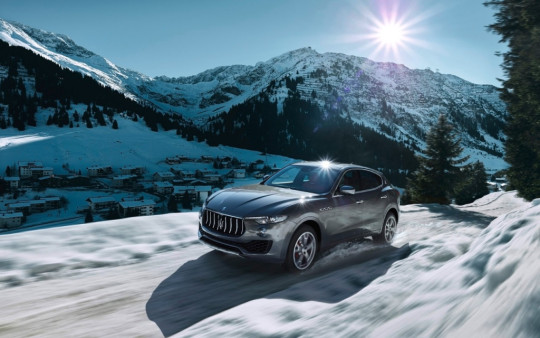
Ford Fiesta RS concept – cool Maserati supercar wallpaper lamborghini wallpaper : http://bit.ly/LamborghiniWallpaper download best lamborghini wallpapers like lamborghini aventador wallpapers, lamborghini veneno wallpapers, lamborghini huracan wallpapers, lamborghini urus wallpapers, lamborghini gallardo wallpapers, lamborghini murcielago wallpapers #lamborghini #wallpapers #urus #huracan #gallardo Lamborghini wallpapers, AudiRS3, chevrolet, Ferrari812, Maserati, Porsche918, Toyota Hilux wallpapers
0 notes
Photo
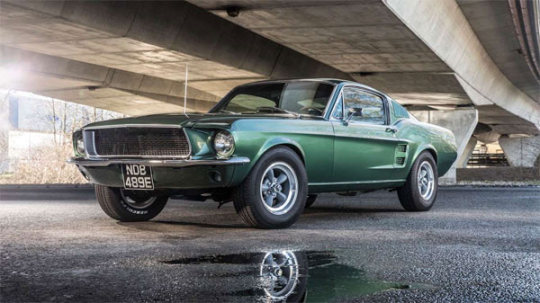
New Post has been published on http://fastmusclecar.com/best-muscle-cars/fords-secret-warehouse-of-classic-cars/
Ford's Secret Warehouse Of Classic Cars
By Dave Ashton
Would you Adam and Eve it(Cockney rhyming slang for ‘believe it’), Ford have a huge secret stash of classic and standout vehicles dotted around their factory in Dagenham, England. The 1930s started facility houses everything from a model T up to present day vehicles. All of them having historical or monetary value and some of the most prized Fords produced.
With such a long rich history, it’s no surprise that Ford would have a prized collection of past models somewhere on the planet. Being a US based company it may seem that the focus should be on American cars. But, Ford have been a mainstay car manufacture in Europe seemingly forever, so it’s no surprise such an extensive collection has been built up over the years.
Anybody over the age of 40 in the UK has probably owned a Ford of some sort in the past. Escorts, the Fiesta, Focus, Capri, Mondeo, Orion, Scorpio, Ka, RS Cosworth, Sierra, Granada, Cortina and the ever reliable Transit van were part of the landscape on UK roads for many years. As a Ford fan, this may be a nice sideline of interest to see how the same company did things across the water.
The bulk of the collection features standout vehicles from Fords European lineup. Plenty of unique cars from the world of rallying, 4 cylinder classics, performance cars and special editions. But that doesn’t mean there aren’t some completely US centric vehicles in there, basically old school muscle cars from the big blue oval. The place isn’t open to the public, so here are a few prized American vehicles stored at the plant.
2005 Ford GT Mk1
The Ford GT40 earnt it’s stripes by blasting past Ferrari at the 1966 LeMans. This 2005 model helped celebrate the hundredth birthday of Ford in 2003 with a 5.4-litre supercharged V8 with 550bhp and a top speed of 205 mph make the GT one powerful collectors item.
1967 Ford Mustang Mk1 GT390 Hardtop
There has to be a few Mustangs in the collection and one of the standouts is a 1967 GT390. This one was acquired by the collection in 2017 to resemble the same vehicle as in the 1968 Bullitt movie. Used to promote the 2018 Bullitt Mustang, less than 1,000 were built in 1967 with a S-Code 390cid V8 and 4-speed manual transmission(gearbox in the UK).
1963 Ford Cougar II concept car
The Cougar II was based on the Cobra SX by Shelby and also came as a convertible. Under the hood(bonnet in the UK) is a 260HP V8 pushing the two seater touring car up to 175 mph. It was meant to originally line up against the Corvette, but never really made it.
Mustang Concept Car
There has to be some modern muscle in there and this example has a 5.0 liter V8 with 410 horses and a 0-62 mph time in 4.8 seconds. A muscle car was a strange concept in Europe, unless you were a fan of US muscle cars as an import. But Ford changed that in 2016 offering the Mustang in native hand drive. Outselling many native performance vehicles, the Mustang is slowly waking up Europe to modern muscle cars.
Capri 280
The Ford Capri is sometimes referred to as the European Ford muscle car. Philip T. Clark, designer of the Ford Mustang had a hand in it’s creation. From 1968-1986 the Capri sold well and this 2.8-liter V6 version with 160 horses was one of the top performers. Ok, it wasn’t available in America, but it’s probably the nearest Europe got to its own muscle car.
0 notes
Photo

Top 10 Wildest Paint Colors You Can Buy Right from the Factory: 2017
Your average daily commute is likely filled with cars painted in standard, mundane shades. But every now and then, you might come across a car that sports such a wild paint job that you think it’s a custom aftermarket shade, and that’s where things get interesting. SEE ALSO: The Paint on this Porsche Costs More Than a Porsche Automakers are getting more daring with the paint shades they offer from the factory, and even if they appeal to a small percentage of their customers, wild exterior colors add a lot of personality to a car. Don’t believe us? Take a look at some of the wild paint shades you can get straight from the factory below. Top 10 Wildest Paint Colors Audi Viper Green Audi‘s shade of green is one of the nicest we’ve ever seen, and it suits the RS3’s wild personality perfectly. The German automaker also offered it on the S3 in limited quantities, along with a few other unique shades including Glut Orange, Vegas Yellow, Misano Red, and Sepang Blue. Like other luxury German automakers, Audi offers its buyers the opportunity to choose from a plethora of custom shades through its Audi Exclusive program. ALSO SEE: 2018 Audi RS 3 Review BMW Frozen Dark Red Metallic BMW is kicking off the launch of its new M5 with a First Edition model sporting Frozen Dark Red Metallic paint. It’s a matte finish that fits the high-performance sedan perfectly, giving it a classy yet aggressive appearance. The paint shade comes from BMW Individual, which offers further customization options for BMW buyers regardless of the model. Chances are, BMW will eventually offer this shade in its lineup for any customer willing to pay for it. Dodge Go Mango Mopar and Dodge arguably have the richest history of awesome paint shades, and this year, the American automaker followed up the revival its of Plum Crazy purple in 2016 with Go Mango orange. Go Mango orange originally got revived on the 2016 Dodge Dart, but after missing for 10 years, it’s back on the Challenger and Charger models. It’s not identical to the original Go Mango shade, as Dodge said it has been modernized for today’s vehicles. Ford Orange Spice Available on the 2017 Ford Fiesta ST, Orange Spice might just be the perfect shade for the hot hatch. And despite being a metallic shade, Ford only charges $595 additional for the option, which is the same as the boring and ubiquitous White Platinum. Ford Grabber Blue Very few cars can pull off a baby blue shade, but the Ford Mustang Shelby GT350 does it naturally. And that’s because this is Ford’s Grabber Blue, which has a rich history with the Mustang. In fact, some would say it’s one of the most iconic colors offered on the sports car. Honda Energy Green Honda isn’t exactly known for wild paint colors, as its cars appeal more to the general consumer looking for a steady daily driver that gets good gas mileage. But the Japanese automaker does have a history of offering unique shades like Electron Blue Pearl, and Energy Green shows Honda is back to being a bit daring. It’s similar to the shade Honda rolled out on the Civic Concept that previewed the latest model, and we’re thrilled the automaker took it to production. Lexus Molten Pearl The introduction of the Lexus RC F sports coupe was the perfect time for the luxury Japanese automaker to bring an exciting shade to its typically conservative palette. It’s called Molten Pearl, a unique shade of orange that works quite well on the RC F and was also available on the GS F. Unfortunately, it appears Molten Pearl is being phased out for the 2018 model year on the RC F, being replaced by Flare Yellow. Mercedes-AMG Green Hell Magno Mercedes-AMG introduced its hot GT R in a wondrous green shade, aptly named Green Hell Magno since the GT R was developed at the Nurburgring, which is also known as the Green Hell. It’s an aggressive and unique shade of matte green that fits the GT R brilliantly. It almost makes any other color on the GT R look strange, even the stunning Solarbeam Yellow Metallic. ALSO SEE: 2018 Mercedes-AMG GT Review Porsche Miami Blue One of the more polarizing colors Porsche offers is Miami Blue. Seen here on the Cayman, it’s also available on 911 models and it really helps the sports car stand out in a crowd. It is a really refreshing and vibrant take on blue and even makes Porsche’s Lava Orange (also pictured) look mundane. Volkswagen Kurkuma Yellow Metallic Yellow paint is normally reserved for cars that are fast and race-inspired, and that’s everything the Atlas is not. But Volkswagen has made a bold choice by offering the Kurkuma Yellow Metallic shade on its new three-row crossover, and we’re surprised by how well it fits the model. It’s pretty wild to think someone might be transporting an entire family in a bright yellow SUV. But hey, this is 2017 after all. The post Top 10 Wildest Paint Colors You Can Buy Right from the Factory: 2017 appeared first on AutoGuide.com News.
http://www.autoguide.com/auto-news/2017/10/top-10-wildest-factory-paint-colors-you-can-buy-today-2017.html
0 notes
Text
Chevrolet Sonic: tudo sobre o compacto vendido no Brasil até 2014
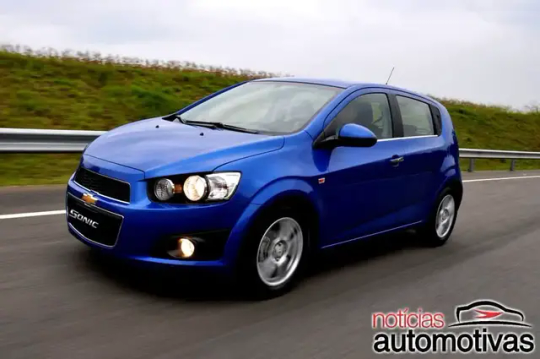
Chevrolet Sonic
Até meados de 2012, a Chevrolet não tinha um hatch compacto moderno o suficiente para brigar com o recém-lançado New Fiesta, da Ford, e também outros modelos tradicionais do segmento, como o Fiat Punto e o Citroën C3. E fato que o Astra era um bom produto com bom custo benefício, mas sua missão não era concorrer com esses modelos. Aí então surgiu o Chevrolet Sonic.
O Sonic foi anunciado como um hatch compacto mais evoluído na linha da Chevrolet. Muitos diziam que ele chegou para ocupar o lugar deixado pelo Astra, que parou de ser produzido em agosto de 2011.
Na realidade, a marca nunca afirmou isso – até porque o Chevrolet Sonic era um produto teoricamente inferior, visto que o Astra nasceu como hatch médio e, mesmo com muito tempo de mercado, ainda tinha certo refinamento.
Este modelo foi lançado no Brasil quase dois anos após ter sido apresentado lá fora. Ele surgiu como Chevrolet Aveo para os europeus no Salão de Paris, em outubro de 2010 e, mais tarde, em janeiro de 2011, foi apresentado como Chevrolet Sonic para os americanos no Salão de Detroit.

Atualmente, o Sonic já não faz mais parte da linha da Chevrolet no Brasil. Ele abandonou o mercado por conta das baixas vendas (muito por conta do preço elevado para o segmento). O Chevrolet Onix, por mais que seja um carro inferior em certos quesitos, hoje ocupa parte do espaço deixado pelo irmão mais velho na gama.
Na realidade, a Chevrolet utilizou um mesmo modelo para substituir diversos outros em sua gama. Por mais que seja mais caro, o Onix ocupou os lugares dos antigos Celta, Corsa, Agile e Sonic.
Trata-se de uma mesma estratégia aplicada mais recentemente pela Fiat, que lançou o Argo para ocupar os lugares do Palio, Punto e Bravo (este último substituído em partes).
Quer saber mais sobre a história do Chevrolet Sonic no Brasil e no mundo? Então siga a leitura e veja tudo sobre ele:

Lançamento do Chevrolet Sonic no exterior
Em janeiro de 2010, a Chevrolet mostrou no Salão de Detroit o novo Aveo RS Concept, um protótipo com visual mais agressivo que anteciparia praticamente todas as linhas da nova geração do Chevrolet Aveo. O modelo tinha como destaque o design marcado pela nova identidade visual da marca na época, marcado pela enorme grade bipartida na dianteira da carroceria.
Além disso, o Chevrolet Aveo RS Concept contava com algumas soluções estéticas diferenciadas entre os carros da marca, como os faróis e lanternas com aparência 3D, sem uma lente protegendo os elementos internos. Havia ainda linha de cintura ascendente e as maçanetas das portas traseiras embutidas na coluna dos vidros.
Nove meses depois, o novo Chevrolet Aveo de produção deu o ar da graça como a nova geração da linha. O carro utilizou a mesma fórmula aplicada pela Ford no Fiesta (ou New Fiesta, para os brasileiros) e desenvolveu um carro com apelo mais jovem. Ele seguiu com o visual diferenciado, inclusive com a grade mais ampla e as soluções inéditas nos faróis e lanternas.
O Chevrolet estreou também a versão sedã, com um porta-malas capaz de levar até 502 litros de carga, uma das melhores capacidades da categoria (segundo o fabricante). Porém, a variante familiar do compacto tem visual mais tradicional e conta até com lanternas traseiras com lente vermelha – uma solução que não forma muita harmonia com os faróis mais agressivos presentes na parte frontal do aparato.

Por dentro, de acordo com a Chevrolet, o painel do novo modelo foi inspirado no superesportivo emblemático Corvette, com um duplo cockpit. Se sobressaía o painel de instrumentos bastante parecido com o de motocicletas, com um mostrador analógico, visor digital LCD e iluminação na tonalidade “Ice Blue”.
No mercado europeu, o Aveo tem um 1.2 litro de quatro cilindros a gasolina, com 70 ou 86 cavalos de potência, um 1.4 litro de quatro cilindros a gasolina com 100 cv e um 1.6 litro de quatro cilindros a gasolina com 115 cv. Há ainda um 1.3 litro turbodiesel, com tecnologia start/stop.
Para os Estados Unidos, o compacto manteve boa parte das características do europeu. Lá, ele chegou como Chevrolet Sonic, mas com uma linha de motores mais potente, com direito a um 1.8 Ecotec aspirado e outro 1.4 Ecotec turbo, ambos de quatro cilindros a gasolina, com transmissão manual de cinco marchas ou automática de seis velocidades para o primeiro e um câmbio manual de seis relações para o segundo.
O Sonic 1.8 americano entrega 135 cv e 17 kgfm, enquanto o Sonic 1.4 turbo tem 138 cv e 20,4 kgfm.

Entre os equipamentos, o Sonic para os consumidores da terra do Tio Sam foi anunciado com freios ABS de quatro canais, 10 airbags (incluindo para os joelhos do motorista e passageiro dianteiro), controle eletrônico de estabilidade, controle de tração, assistente de partida em rampas, monitoramento da pressão dos pneus, direção elétrica, ar-condicionado, vidros, travas e retrovisores com acionamento elétrico, navegador GPS, entre outros.
Esses itens já eram ofertados desde a versão mais básica. O modelo mais caro, o Sonic LTZ, era equipado de fábrica com outros itens adicionais, como sistema de som com MP3 player e entrada USB, controle de cruzeiro, rodas de liga-leve de 17 polegadas, bancos e volante com revestimento em couro, volante multifuncional, assentos dianteiros com aquecimento, entre outros.
Ou seja, como dá para reparar, o Sonic para os Estados Unidos é exemplar em segurança. Tanto é que ele foi testado pelo NHTSA, instituição responsável pela segurança viária no território norte-americano, e conseguiu cinco estrelas nos testes de impacto.
O Chevrolet Sonic americano tinha preços entre R$ 14.495 e US$ 17.995, pelo menos na ocasião de lançamento.

Chevrolet Sonic no Brasil em 2012
No fim de maio de 2012, o Chevrolet Sonic deu o ar da graça no mercado brasileiro. O hatch e o sedã de porte compacto foram apresentados por aqui com a missão de ser um carro para “consumidores mais novos e também aos jovens de espírito, com gosto pelo design, sofisticação e exclusividade”, conforme informou a marca no comunicado emitido na época.
O Sonic fez a sua estreia no Brasil sob importação da Coreia do Sul. Logo depois ele passou a ser importado do México. Porém, por mais que o Brasil e o México tivessem um acordo comercial, o Sonic mexicano chegou por aqui pagando imposto de importação, visto que toda a cota cedida à General Motors era ocupada pelo já extinto crossover médio Captiva.
A versão “nacional” do Chevrolet Sonic estreou nas carrocerias hatch e sedã, nas versões de acabamento LT e LTZ e sempre com o motor 1.6 16V Ecotec flex, com transmissão manual de cinco marchas ou automática de seis velocidades.
A expectativa inicial era que o compacto utilizasse o 1.8 Ecotec, mas a marca resolveu mantê-lo como uma exclusividade para o Cruze.
O visual do Chevrolet Sonic comercializado em nosso mercado seguiu a mesma concepção do modelo ofertado em outros países, bem como o desenho do interior. Como destaque, o carro trazia o já mencionado painel de instrumentos com displays analógico e digital, dois porta-luvas (um deles com uma entrada USB integrada), volante multifuncional, entre outros.

Para oferecer o compacto no Brasil, a Chevrolet olhou bastante para os passos dados pela Honda com a dupla Fit e City. A partir daí a marca norte-americana definiu boa parte da lista de equipamentos de série e também o preço do Sonic para o nosso mercado.
E já vamos adiantar que foi justamente esse um dos grandes erros que provocou o insucesso do Chevrolet Sonic em nosso País. O carro era caro demais para a categoria, ainda mais por se tratar de um modelo totalmente novo no segmento e sem qualquer histórico e nome fixado no mercado.
O Chevrolet Sonic na carroceria hatch foi comercializado por aqui com preço de R$ 46.200 para a versão LT com câmbio manual, R$ 48.700 para o modelo LTZ com transmissão manual e R$ 51.500 para a configuração LTZ com câmbio automático. Do outro lado, o Chevrolet Sonic Sedan chegou com preços de R$ 49.100, R$ 53.600 e R$ 56.100, respectivamente.
Para efeito de comparação, o Fiat Punto 2013 (versão reestilizada do compacto) custava a partir de R$ 41.750 na versão Essence 1.6, R$ 46.400 na Sporting 1.8 e R$ 55.740 na esportiva T-Jet com motor 1.4 turbo.

O Honda Fit 2013 (também em sua linha reestilizada da antiga geração), por sua vez, tinha preços que variavam entre R$ 51.800 e R$ 67.720.
Outro concorrente do Sonic era o Ford New Fiesta, que em sua linha 2013 nacional chegou com preços entre R$ 38.990 e R$ 54.990. Todavia, se destacava frente ao Chevrolet pela lista de equipamentos, com itens como controles de estabilidade e tração, retrovisor interno eletrocrômico, sete airbags, ar-condicionado digital, entre outros.
Entre os equipamentos de série, o Chevrolet Sonic LT oferece airbags frontais, freios ABS com EBD, rodas de liga-leve de 15 polegadas, limpador e desembaçador do vidro traseiro, direção hidráulica, computador de bordo, vidros, travas e retrovisores elétricos, ar-condicionado, alarme, chave canivete, volante com regulagem de altura e profundidade, sistema de som com entrada UB e conexão Bluetooth, entre outros.
Já o Chevrolet Sonic LTZ acrescenta rodas de liga-leve de 16 polegadas, descansa braço central para o motorista, volante multifuncional, rede porta-objetos no porta-malas, detalhes visuais cromados, sensor de estacionamento, faróis de neblina dianteiros, entre outros. Com câmbio automático, ele trazia ainda bancos revestidos em couro e piloto automático.

Ou seja, recursos como controles de estabilidade e tração, airbags laterais, de cortina e para os joelhos do motorista, assistente de partida em rampas, retrovisor interno eletrocrômico, entre outros, não foram ofertados nem como opcionais.
A respeito do conjunto mecânico, o Sonic esconde sob o capô o motor 1.6 16V Ecotec flex aspirado de quatro cilindros. Ele é dotado de duplo comando de válvulas continuamente variável (Dual CVVT), com variação do tempo de abertura das válvulas de admissão e de escape.
Há ainda coletor de admissão variável (que torna as respostas do motor mais rápidas), bielas forjadas e cabeçote em alumínio. Vale ressaltar que a tecnologia flex deste motor é brasileira, desenvolvida pelos engenheiros da filial nacional da General Motors.
Ele consegue desenvolver 116 cavalos de potência com gasolina e 120 cv com etanol, a 6.000 rpm, e torque de 15,8 e 16,3 kgfm, respectivamente, a 4.000 rpm. De acordo com a marca, 90% do torque (cerca de 14,6 kgfm) estão disponíveis a partir de 2.200 rpm.
youtube
Junto a este propulsor está uma transmissão manual de cinco marchas ou automática de seis velocidades, esta com opção de trocas manuais no modo sequencial.
Outro ponto que merece ser destacado é que o Chevrolet Sonic é construído a partir da plataforma Gamma II, a mesma usada na atual linha de compactos da marca em nosso mercado.
Na ocasião de lançamento, o Sonic foi comercializado em seis cores diferentes: Vermelho Flame, Azul Boracay (exclusiva do hatch), Cinza Urban, Prata Switchblade, Preto Carbon Flash (todas com acabamento metálica) e Branco Summit (sólida).
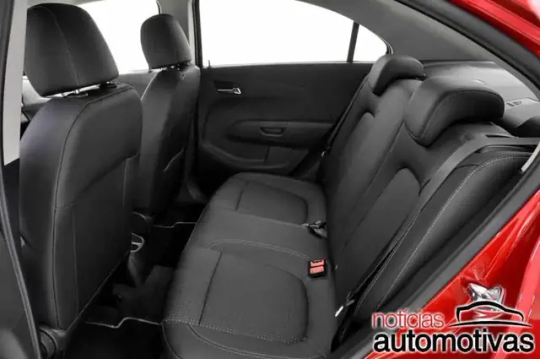
Chevrolet Sonic 2014 com novidades
Para corrigir algumas falhas e atender as expectativas dos consumidores, a Chevrolet anunciou em agosto de 2013 a chegada do Chevrolet Sonic 2014. A nova linha do hatch e sedã compactos foi anunciada com novos equipamentos de série, porém, somente para a versão topo de linha LTZ.
O Chevrolet Sonic LTZ 2014 passou a ser comercializado com a central multimídia MyLink, deixando de lado o sistema de som convencional sem qualquer tela sensível ao toque. Além disso, ele adotou o sensor de chuva (que aciona os limpadores de para-brisa automaticamente) também como item de série.
O sistema MyLink usado no Sonic não é tão evoluído quanto o usado atualmente em modelos como o Onix. Ele dispõe apenas de uma tela LCD sensível ao toque de sete polegadas, reprodução de músicas, fotos, vídeos e aplicativos do celular, realização de ligações telefônicas via Bluetooth e a possibilidade de controlar algumas funções do carro, como avisos sonoros de faróis ligados, travamento automático das portas, entre outros.
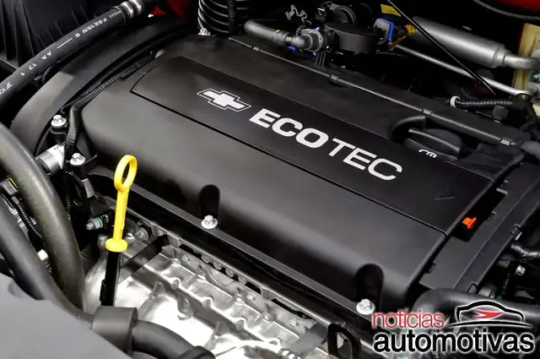
Há também apps como o TuneIn, o navegador BringGo e o Stitcher. Para proprietários de iPhone, há o controle da assistente pessoal Siri direto no painel do carro, com direito ainda a comandos de voz. A Chevrolet diz que o Sonic foi o primeiro carro do mundo a oferecer o sistema Siri para usuários do smartphone da Apple.
Outra novidade foi a introdução de duas novas cores para o hatch, Azul Berlin e Cinza Ashen, e o Cinza Ashen para o sedã.
Os preços do carro ficaram mais altos. O Chevrolet Sonic LT manual 2014 passou para R$ 48.190, enquanto o Chevrolet Sonic LT automático 2014 foi para R$ 51.690 e o Chevrolet Sonic LTZ automático 2014 subiu para R$ 56.490.
O Chevrolet Sonic Sedan LTZ automático 2014, por sua vez, passou a custar R$ 59.490. As versões Hatch LTZ manual, Sedan LT manual e Sedan LTZ manual foram descontinuadas.

Sonic Effect estreia como série especial
Uma das principais novidades durante toda a trajetória do Chevrolet Sonic no Brasil foi a série especial Effect. O Chevrolet Sonic Effect surgiu em outubro de 2013 juntamente com o Chevrolet Agile Effect. Na versão exclusiva, o hatch compacto passou a oferecer um visual mais “esportivo”, além de acessórios originais incorporados com base na versão LTZ.
O Chevrolet Sonic Effect se diferencia pela pintura da carroceria na cor Branco Ice, além das rodas de liga-leve de 16 polegadas com pintura preta, tampa de combustível com adesivo decorativo, capa dos espelhos retrovisores na cor preta, adesivos nas laterais, capô, teto e tampa do porta-malas, entre outros.
Já o interior ostenta tapetes de borracha exclusivos e protetor de soleira com acabamento em alumínio escovado. Fora isso, nenhuma outra novidade em relação ao Sonic LTZ, a não ser o preço mais elevado.
Todas essas “firulas” acrescentaram mais de R$ 3 mil ao preço final do Sonic Effect. O hatch compacto na série especial foi comercializado com preço de R$ 59.890.

Fim do Chevrolet Sonic no Brasil
O Chevrolet Agile e o Chevrolet Sonic estiveram juntos no lançamento da versão Effect e também em suas descontinuações no mercado nacional. O Sonic e o irmão menor tiveram suas vendas descontinuadas no Brasil no mês de setembro de 2014. O motivo? As baixas vendas, fazendo com que ambos não conseguissem fazer frente aos seus rivais de segmento.
No caso do Sonic, além dos preços elevados demais para a categoria e a ausência de equipamentos ofertados pelos rivais, outro fator que culminou para vendas cada vez menores no mercado foi a chegada do Chevrolet Onix no ano de 2012. Desde então, o carro foi o principal modelo em vendas da Chevrolet no Brasil.
Entre janeiro e setembro de 2014, o Chevrolet Sonic conseguiu emplacar 4.406 unidades no mercado nacional. Já o Peugeot 208 registrou 17.439 vendas, enquanto o Citroën C3 vendeu 22.208 exemplares e o Ford Fiesta, 90.431 modelos (na época, o modelo Fiesta Rocam ainda era vendido e tinha as suas vendas contabilizadas com as do New Fiesta).

Reestilização do Chevrolet Sonic nos EUA
No mês de março de 2016, o Chevrolet Sonic surgiu com visual renovado para os Estados Unidos. O carro adotou uma cara totalmente diferente, com faróis redesenhados com aspecto convencional e luzes diurnas de LED, agora interligados à nova grade, mais discreta e com o logotipo da marca no centro.
Faz parte do conjunto a ampla grade com moldura cromada e os faróis de neblina abrigados por uma capa plástica preta. Os para-choques dianteiro e traseiro foram redesenhados. As lanternas traseiras também ganharam um novo formato.
Entre os equipamentos, o carro adotou o sistema MyLink com tela sensível ao toque de sete polegadas, Android Auto e Apple CarPlay, banco do motorista com ajustes elétricos, chave presencial e partida por botão e volante com aquecimento.
Chegaram a cogitar a volta do Sonic ao Brasil já nesta versão reestilizada. Porém, o Onix deve seguir como o único hatch compacto da marca por aqui.
Galeria de fotos do Chevrolet Sonic no Brasil







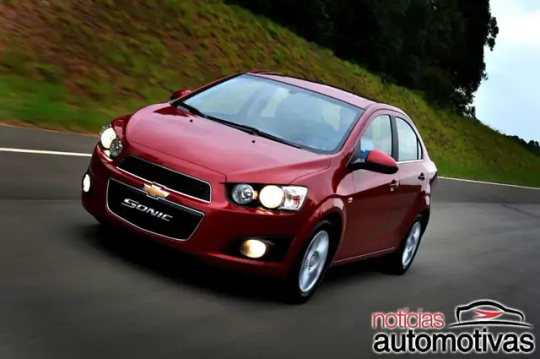


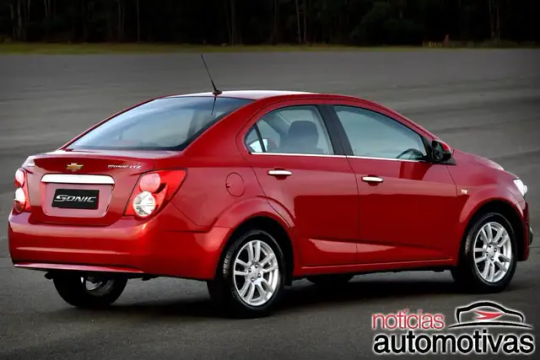






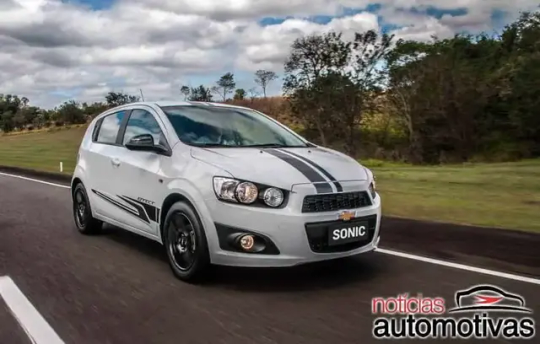




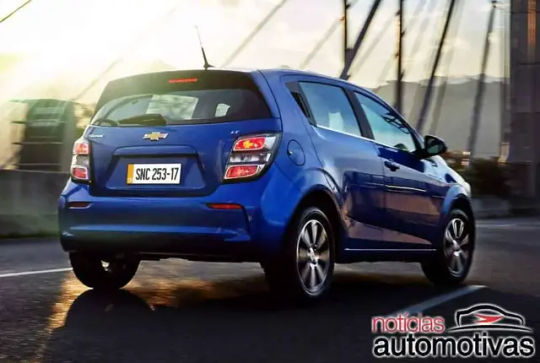
© Noticias Automotivas. A notícia Chevrolet Sonic: tudo sobre o compacto vendido no Brasil até 2014 é um conteúdo original do site Notícias Automotivas.
Chevrolet Sonic: tudo sobre o compacto vendido no Brasil até 2014 publicado primeiro em https://www.noticiasautomotivas.com.br
0 notes
Text
Turbofan Wheels: The History and Appeal of These Awesome Rims
For any given era and social niche, there are certain markers, certain cultural icons, that serve as symbolic bywords for that era and culture. Clothing can easily become such a reference: bell-bottoms, backward clothes, flannel, JNCOs, skinny jeans—each has had its heyday. So, too, with cars, some icons standing in as rolling representations of their eras—Wolf of Wall Street, anyone? But what about what the cars roll on? Do the shoes make the car, too? In the case of “turbofan” wheels, at least, the answer is yes.
What Is a Turbofan?
Originating from the time when racing’s top levels were just beginning to figure out the “how” of creating downforce and minimizing aerodynamic lift in the 1970s, turbofan wheels were another step in that direction. Perhaps capturing that nascent but incomplete understanding is the name itself, derived from the structure of jet engines.
Typically, an early racing turbofan wheel was little more than a flat, round plate backed with vanes, bolted to the outside of the car’s wheel. The idea was that the flat outer surface produced less aerodynamic drag, while the vanes inside the wheel would still distribute ample cooling air over the brakes. There’s also some evidence that early turbofan pioneers were looking to improve underbody aero, too, though whether they hoped to use the wheel covers as dams to help air flow under the car, or sucker fans to extract air out from under the car, is unclear. It was all a dark art back then, anyway.
Today, turbofan wheels take many forms; some are integral designs with the function of the bolt-on turbofan forged right into the aluminum, others are still bolt-on, and still others use an integral design and the look of turbofans, but lack the internal structure to function as true turbofans—in fact, the latter category is by far the most common.
Turbofans on Production Cars
While turbofan wheels were made famous by legendary race cars of the late 1970s and early 1980s, there have been production cars built with turbofan-style wheels, including the Pontiac Turbo Trans Am, the fourth-generation Chevy Corvette, and the E34-series BMW M5, among others.
Of course, like any cultural phenomenon that grabs the attention and imagination of a large percentage of the populace, turbofan wheels have been taken too far at times, too. My 1994 Ford F-250’s OEM kick-on plastic wheel covers, for example, had a turbofan-style design, making them perhaps the only parts on the truck that were even aware of the concept of aerodynamics. They don’t look cool, either.
Turbofans on Modern Cars
The science of wheel aerodynamics has come a long way in the past 30 years. Most new cars in some way manipulate the air that flows over and through the wheels, whether it’s to make the vehicle more aerodynamically efficient for better gas mileage in standard passenger cars, hybrids, and EVs, or to improve downforce or brake cooling for performance cars. Most often, the over-wheel airflow is handled by a concert of vents and flaps in the front bumper cover, front fender, and the rear bumper/fender/diffuser complex, with the wheel-face design itself playing a smaller role.
While modern production cars don’t often lean on the turbofan aesthetic, it lives on in the aftermarket, and in enthusiast communities shaped by the motorsports history and iconic looks of the cars that wore them originally. Ken Block’s Gymkhana 6 car, for example, a 2015 Ford Fiesta ST rallycross car, wore turbofans on the front wheels—but not on the back. Block’s Ford Escort RS Cosworth, aka “Cossie V2,” also wears turbofan wheels, alternately pictured with a matching set of four classic turbofans, or with a set of black classic turbofans up front, and a set of white fan-style five-spokes on the rear axle.
Porsche’s own re-born 935 (many regard the original as the originator of the turbofan wheel) sports a full set of classic-style turbofan wheels.
Regardless of their dubious efficacy, or the aerodynamic advances made in the decades since their arrival, turbofan wheels remain a touchstone of automotive style, and markers of an era when pushing the limits of what was possible meant exploring the unknown and even the unlikely in search of speed and victory—and, let’s be real, they just look cool as hell.
Turbofan Wheel Quick Facts
Born of 1970s and 1980s race cars
Intended to aid aerodynamics as well as manage brake temperatures
Made in many different styles
Still popular with enthusiasts
Available in the aftermarket
Iconic emblem of an era to a certain populace of automotive and racing enthusiasts
The post Turbofan Wheels: The History and Appeal of These Awesome Rims appeared first on MotorTrend.
Turbofan Wheels: The History and Appeal of These Awesome Rims published first on https://kwsseuren.tumblr.com/
0 notes
Photo

New Post has been published on http://fastmusclecar.com/best-muscle-cars/fords-secret-warehouse-of-classic-cars/
Ford's Secret Warehouse Of Classic Cars
By Dave Ashton
Would you Adam and Eve it(Cockney rhyming slang for ‘believe it’), Ford have a huge secret stash of classic and standout vehicles dotted around their factory in Dagenham, England. The 1930s started facility houses everything from a model T up to present day vehicles. All of them having historical or monetary value and some of the most prized Fords produced.
With such a long rich history, it’s no surprise that Ford would have a prized collection of past models somewhere on the planet. Being a US based company it may seem that the focus should be on American cars. But, Ford have been a mainstay car manufacture in Europe seemingly forever, so it’s no surprise such an extensive collection has been built up over the years.
Anybody over the age of 40 in the UK has probably owned a Ford of some sort in the past. Escorts, the Fiesta, Focus, Capri, Mondeo, Orion, Scorpio, Ka, RS Cosworth, Sierra, Granada, Cortina and the ever reliable Transit van were part of the landscape on UK roads for many years. As a Ford fan, this may be a nice sideline of interest to see how the same company did things across the water.
The bulk of the collection features standout vehicles from Fords European lineup. Plenty of unique cars from the world of rallying, 4 cylinder classics, performance cars and special editions. But that doesn’t mean there aren’t some completely US centric vehicles in there, basically old school muscle cars from the big blue oval. The place isn’t open to the public, so here are a few prized American vehicles stored at the plant.
2005 Ford GT Mk1
The Ford GT40 earnt it’s stripes by blasting past Ferrari at the 1966 LeMans. This 2005 model helped celebrate the hundredth birthday of Ford in 2003 with a 5.4-litre supercharged V8 with 550bhp and a top speed of 205 mph make the GT one powerful collectors item.
1967 Ford Mustang Mk1 GT390 Hardtop
There has to be a few Mustangs in the collection and one of the standouts is a 1967 GT390. This one was acquired by the collection in 2017 to resemble the same vehicle as in the 1968 Bullitt movie. Used to promote the 2018 Bullitt Mustang, less than 1,000 were built in 1967 with a S-Code 390cid V8 and 4-speed manual transmission(gearbox in the UK).
1963 Ford Cougar II concept car
The Cougar II was based on the Cobra SX by Shelby and also came as a convertible. Under the hood(bonnet in the UK) is a 260HP V8 pushing the two seater touring car up to 175 mph. It was meant to originally line up against the Corvette, but never really made it.
Mustang Concept Car
There has to be some modern muscle in there and this example has a 5.0 liter V8 with 410 horses and a 0-62 mph time in 4.8 seconds. A muscle car was a strange concept in Europe, unless you were a fan of US muscle cars as an import. But Ford changed that in 2016 offering the Mustang in native hand drive. Outselling many native performance vehicles, the Mustang is slowly waking up Europe to modern muscle cars.
Capri 280
The Ford Capri is sometimes referred to as the European Ford muscle car. Philip T. Clark, designer of the Ford Mustang had a hand in it’s creation. From 1968-1986 the Capri sold well and this 2.8-liter V6 version with 160 horses was one of the top performers. Ok, it wasn’t available in America, but it’s probably the nearest Europe got to its own muscle car.
0 notes